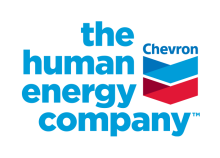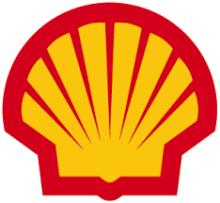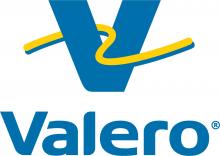54th Annual Loss Prevention Symposium (LPS)
The Loss Prevention Symposium (LPS) is one of several parallel symposia that comprise the Global Congress on Process Safety (GCPS). The purpose of the LPS conference is to present technological advances in process safety, explosion prevention, fire protection and lessons learned from incident investigations. LPS focuses on process safety technology – new developments, cutting-edge solutions, and innovative/novel approaches to hazard identification and risk assessment/management.
The conference agenda normally consists of six sessions, each with six 25-minute presentations. Papers are selected by session chairs based on abstracts of 100-200 words. Each submitted abstract must offer a brief account of the contents, conclusions, and the relevance to the topic area. Submitted abstracts must include the author, their affiliation, full address, email, and phone number. The papers will be published in the GCPS proceedings.
Encouraged topics for this conference include, but are not limited to:
- Fires, Explosions, and Chemical Reactivity
- Facility Siting, Consequence Analysis, and Risk Assessment
- Combustible Dust Hazards and Their Mitigation
- Extreme Weather and other External Events
- Mechanical Integrity, Asset Integrity, Damage Mechanisms, and Condition Monitoring
- Emerging Topics and Technologies
- Engineered Safeguards: Pressure Relief and Safety Instrumented Systems
- Case Histories
LPS Chair:
-
Jérôme Taveau, LPS_chair@aiche.org
Session Topic Descriptions:
Fires, Explosions, and Chemical Reactivity
The analysis, prevention, protection, and mitigation of fires, explosions, and chemical reactivity hazards has always been important to the loss prevention community. This technical session invites papers on these process hazards, with a specific focus on new data, novel or cutting-edge approaches related to hazards identification/characterization, hazards assessment, and the development of safe designs and/or operational practices to manage the hazards.
Facility Siting, Consequence Analysis, and Risk Assessment
Consequence modeling, quantitative risk assessment techniques, and facility siting analyses are key tools applied by loss prevention professionals to understand and manage risk. Applications for these methodologies include capital projects, on-shore and off-shore facilities, pipelines, transportation, and emergency response. This session seeks papers describing recent advances and novel approaches to facility siting, consequence analysis, and quantitative risk analysis, as well as the integration and application of these tools and techniques into corporate risk assessment. Papers discussing best practices, case studies, and lessons learned are encouraged.
Combustible Dust Hazards and Their Mitigation
Dust explosion safety continues to be an area of interest and development for loss prevention professionals. This session is seeking papers presenting new data on dust hazards and their mitigation, including the development of new dust explosion prevention and protection techniques.
Extreme Weather and other External Events
Site risk assessments are typically based on potential events associated with incidents at the site itself. However, there is increasing attention being given to the impact on operations from external events, including extreme weather and other natural disasters (floods, earthquakes, etc.); sabotage (physical and cyber) from hostile entities; and hazardous events from neighboring facilities (fire, explosions, toxic releases etc.). Topics to be covered in this call for papers include, but are not limited to: prediction, modeling, layers of protection, and mitigation of consequences associated with such events, as well as ways to engage the broader community in planning for their occurrence.
Mechanical Integrity, Asset Integrity, Damage Mechanisms, and Condition Monitoring
Managing asset integrity involves designing, procuring, constructing and maintaining process facilities that provide control of process hazards over the life cycle for equipment as varied as piping, vessels, rotating equipment, instrumentation and controls, safety systems, utilities, and key infrastructure. This session is an opportunity to share mechanical integrity philosophies and programs, as well as implementation details for specific equipment types or failure mechanisms. Advances in developing inspection, testing, and preventive maintenance intervals using risk- and reliability-based methods and models is also of interest.
Emerging Topics and Technologies
As the chemical processing industry evolves into the digital frontier, big data analytics and intelligent devices are transforming the way we do business and manage operational risks. Challenges faced in process safety now more than ever require innovative and multi-disciplinary approaches to problem solving that can turn complex data into actionable intelligence. We invite new research and industrial implementations of emerging technologies that have current and future implications to loss prevention in the chemical industry. This session covers a range of topics including advanced process decision-making, artificial intelligence, predictive analytics, machine learning, as well as robotics, drones, autonomous vehicles, smart devices, and 3D printing. These next generation technologies will unlock our potential to bring science to safety.
Engineered Safeguards: Pressure Relief and Safety Instrumented Systems
Pressure relief and safety instrumented systems are often the last line of defense before the occurrence of a catastrophic event. Their design, sizing, and reliability are hence of critical importance for the chemical process industries. This session invites speakers to share their knowledge on new applications, best practices, case studies, and lessons learned.
GCPS Joint Session: Case Histories
Reviews of process safety incidents provide valuable learning opportunities. This session invites papers to help understand the causes and lessons learned from incidents in the industry with an emphasis on events that have helped define and develop the process safety field over the years.

















